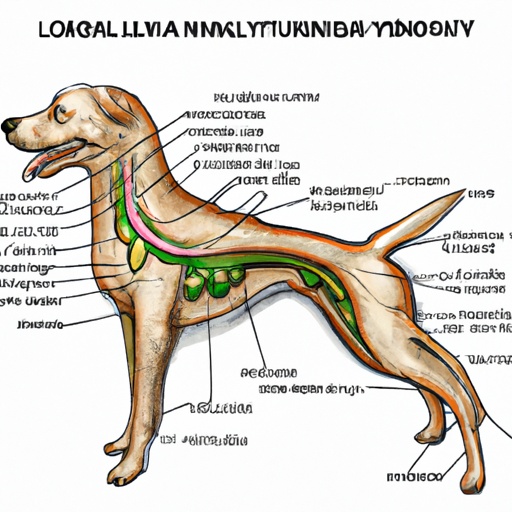As an enthusiastic dog owner, you have probably wondered about your pet’s anatomy. You know, their tail, their paws, their nose, but, where is a dog’s belly exactly? This guide will help you understand your furry friend’s anatomy better, focusing primarily on a dog’s belly. We will delve into its location, its importance, and how to care for it.
Understanding Your Dog’s Anatomy
A dog’s anatomy is quite complex, with each body part serving a unique role. Understanding your dog’s anatomy, especially their belly, can help you as a caregiver in numerous ways, such as identifying potential health issues, grooming, and general pet care.
Locating Your Dog’s Belly
To locate your dog’s belly:
- Have your pet lay on their side or back.
- Start at their chest – just behind their front legs.
- Move your hand along their body towards their hind legs.
- You will feel a soft, less hairy area – this is their belly!
Your dog’s belly is situated between their chest and hind legs, and it’s typically less hairy and softer than the rest of their body.
The Importance of a Dog’s Belly
Why is a dog’s belly so important?
- Digestion: Your dog’s belly houses important organs such as the stomach and intestines, crucial for digestion.
- Reproduction: Female dogs have their reproductive organs located in the belly area.
- Protection: While the belly area is soft and vulnerable, it’s also a place dogs instinctively protect.
Caring For Your Dog’s Belly
Now that you’ve located the belly, how do you care for it? Here are some tips:
- Regular Checks: Regularly inspect your dog’s belly for any signs of irritation, rash, or swelling.
- Grooming: While grooming, be gentle around the belly area as it is sensitive.
- Belly Rubs: Most dogs love belly rubs! However, only proceed if your pet is comfortable.
| Care Aspect | Frequency |
|---|---|
| Belly check | Once a week |
| Belly grooming | Once a month |
| Belly rubs | As often as they like! |
Understanding Your Dog’s Belly Health
You’ve learned where your dog’s belly is and how to care for it. But how can you tell if your dog’s belly is healthy?
- A healthy dog’s belly should be smooth and free of any lumps or bumps.
- It should not be swollen or hard to touch.
- There should not be any areas of redness, rash, or irritation.
- Your dog should not show any signs of discomfort when their belly is touched.
If you notice any of these symptoms, it’s advisable to consult with a vet immediately.
FAQs About a Dog’s Belly
Here are some frequently asked questions about a dog’s belly.
Why is my dog’s belly bloated?
Bloating in dogs can be a result of overeating, gas, or a serious condition called gastric dilatation-volvulus (GDV). If your dog’s belly is bloating frequently, you should seek veterinary help immediately.
What does a red belly indicate?
A red belly might indicate irritation or infection. It could be due to allergies, parasites, or a skin condition. If your dog’s belly appears red, consult a vet for proper diagnosis and treatment.
Why does my dog like belly rubs?
Dogs enjoy belly rubs because they find it soothing and comforting. It’s also a way for them to show trust in you as their caregiver.
By understanding your dog’s anatomy, especially their belly, you can provide them with better care. Remember, regular checks, proper grooming, and prompt medical attention when necessary can ensure a happy and healthy life for your furry friend.



